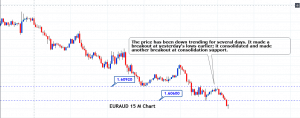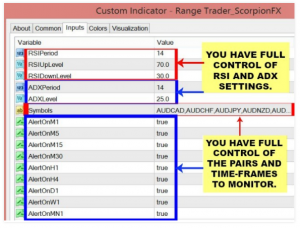Introduction
Technical analysis is a major part of the trading without it most of the traders cannot think to trade the market, there are different types of indicators available in the market, but most of the indicators exist for one sole purpose, and that is to provide the trading signals. Some of the indicators are the leading one in the industry, and some are the lagging indicators; some provide the divergence; some gauge the momentum of the trend while other indicators follow the trend and provide the buy and sell signals. In this article, we will share with you the five most important technical trading indicators to add to your trading toolkit. You don’t need to use all of them; instead, pick the few of them that suits your trading style.
TRADING INDICATORS.
- MACD – MACD stands for Moving Average Convergence and Divergence is a trend following indicator developed by Gerald Appel in the late seventies. MACD Is one of the simplest and most effective trading indicators. The MACD indicator is calculated by subtracting the 26-period exponential moving averages from the 12 period EMA. The result of this calculation is the MACD line. A nine-period EMA is then plotted on top of the MACD line, which gives the buy and sells signals. Traders buy the security when the MACD line crosses above its signal line and take sell when it closes below the signal line. The indicator also fluctuates above and below the zero line which indicates the buying and selling market. Traders can also look for the divergence, overbought and oversold level, and rapid rises and falls.
- S.I. –RSI Stands for Relative strength index is a momentum indicator developed by the J. Welles Wilder. The indicator measures the speed and change of price movements, and as a result, it provides us overbought and oversold trading opportunities. The RSI Indicator has three major uses, the indicator moves between the zero to hundred level, and these levels helps to gauge the momentum and the strength of the trend. When the indicator moves above the 70 level, it is considered as an overbought level and soon expects the reversal. When it moves below the 30 level, it is considered an oversold level and expects a buy-side reversal. Some aggressive traders try to buy and sell the security when the prices approach these levels, and some conservative traders wait for the price action and indicator to show some signs of reversal, then they take the trade. The divergence is the second use of the indicator; divergence is when the price action is moving in one direction, and the indicator is moving in another direction; it is also a sign of the trend reversal. The third use is the indicator also provides the support and resistance level. In an uptrend, the security often holds above the 30 level, and most of the time, it reaches the 70 level, and in a downtrend, the security holds below the 70 level, and it often reaches the 30 level.
- STOCHASTIC –Stochastic is a momentum indicator developed by George C. Lane in the late 1950s. Most of the traders think the stochastic is follows the price or volume, but it’s not true according to the Lane the indicator follows the speed or momentum of the price. As a rule, the momentum of the price action changes its direction before the trend changes direction, which makes the MACD as a leading indicator in the industry. The indicator is plotted between the 0 to 100 level, and it oscillates the 20 to 80 level. When the price action goes above the 80 level, it is an indication to go short, and when it goes to the level, it’s a sign to go long. In short, values above 80 considered overbought and values below 20 considered oversold. The bullish and bearish divergence is also useful to foreshadow the upcoming reversals.
- AROON INDICATOR – Aroon is a technical indicator developed by the Tushar Chande in 1995. The indicator uses to identify the trend changes in an asset as well as the strength of the ongoing trend. The indicator also helps the traders to identify whether the market is trending or range-bound by using its two components, which are Aroon Up and Aroon Down. When the Aroon up crosses above the Aroon down, it is a sign of the possible trend change. When the Aroon up hits the 100 level, and Aroon down goes near to zero level it is a sign of the uptrend in progress. Conversely, If the Aroon down crosses above Aroon up and stays near 100, this is an indication of the downtrend.
- KST INDICATOR – When It comes to day trading, the K.S.T. indicator is one of the best, which you can use to make quick bucks from the market. K.S.T. stands for Know Sure Thing is a momentum indicator developed by the Martin Pring. The indicator was first described in the 1992 magazine “Summed Rate of Change.” The indicator is used in the same way as the rest of the momentum indicator is in play. K.S.T. indicator moves above and below the zero level. The trading signal generated when the indicator crosses above and below the signal line. Traders look for the divergence, crossover, and both the lines above and below the zero level to trade the signals. When the indicator goes above the zero level it’s a sign of buying momentum, and when it goes below the zero level, the momentum is in the favors of the sellers. A positive reading indicates the trend is up, and the negative readings indicate the trend is down.
CONCLUSION.
The goal of every trader is to identify the trading signals and use it to trade the short or long term trends. There are hundreds of trading indicators available in the market, and the above five are the most popular A.K.A. celebrity indicators, which widely used by every type of traders in the market. Use these indicators in your everyday trading to trade the high probability trading opportunities.



